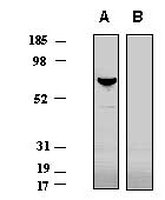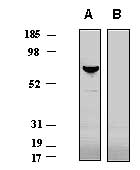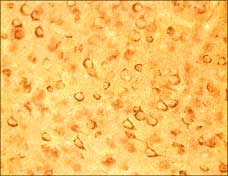PC376 Sigma-AldrichAnti-P2X4 Receptor (373-388) Rabbit pAb
Productos recomendados
Descripción
| Replacement Information |
|---|
Tabla espec. clave
| Species Reactivity | Host | Antibody Type |
|---|---|---|
| H, M, R | Rb | Polyclonal Antibody |
| Product Information | |
|---|---|
| Form | Liquid |
| Formulation | In 0.05 M sodium phosphate buffer, 0.2% gelatin. |
| Positive control | Mouse brain, rat brain, or SK-N-SH cells |
| Preservative | ≤0.1% sodium azide |
| Quality Level | MQ100 |
| Physicochemical Information |
|---|
| Dimensions |
|---|
| Materials Information |
|---|
| Toxicological Information |
|---|
| Safety Information according to GHS |
|---|
| Safety Information |
|---|
| Product Usage Statements |
|---|
| Storage and Shipping Information | |
|---|---|
| Ship Code | Blue Ice Only |
| Toxicity | Standard Handling |
| Storage | +2°C to +8°C |
| Do not freeze | Yes |
| Packaging Information |
|---|
| Transport Information |
|---|
| Supplemental Information |
|---|
| Specifications |
|---|
| Global Trade Item Number | |
|---|---|
| Número de referencia | GTIN |
| PC376 | 0 |
Documentation
Anti-P2X4 Receptor (373-388) Rabbit pAb Ficha datos de seguridad (MSDS)
| Título |
|---|
Anti-P2X4 Receptor (373-388) Rabbit pAb Certificados de análisis
| Cargo | Número de lote |
|---|---|
| PC376 |
Referencias bibliográficas
| Visión general referencias |
|---|
| Le, K.-T., et al. 1998. Neuroscience 83, 177. Nicke, A., et al. 1998. EMBO J. 17, 3016. Ralevic, V. and Burnstock, G. 1998. Pharmcolol. Rev. 50, 413. North, R.A. and Barnard, E.A. 1997. Curr. Opin. Neurobiol. 7, 346. Radford, K.M., et al. 1997. J. Neurosci. 17, 6529. Buell, G., et al. 1996. EMBO J. 15, 55. Collo, G., et al. 1996. J. Neurosci. 16, 2495. Seguela, P., et al. 1996. J. Neurosci. 16, 448. Bo, X., et al. 1995. FEBS Lett. 375, 129. Lewis, C., et al. 1995. Nature 377, 432. |









